What better way to cool off during the summer months than taking a little vacation near some nice, cool water? These getaways are a time to relax, make memories, and spend quality time with family and friends. With the go-go-go world we live in, this downtime is crucial not only for our happiness but our wellness too! Or it should be, as long as there isn’t mold in your beach rental or lake house property.

Chances are, this isn’t something that has popped on your radar and you are definitely not alone. Indoor contaminants aren’t a huge topic in today’s society (at least for now). That being said, if you’re renting a toxic getaway home, this can put a bit of a damper on your vacation time. No one wants to spend their beach or lake days feeling icky, which is why it’s important to know what steps you can take to ensure these spaces are safe for you, your family, and your friends.
It may seem like an extra nuisance with all of the planning, packing, and coordinating, but it can help ensure you’re living your best vacation life. So it’s definitely worth the extra work!
That being said, here’s the 411 on questions to ask before you go, what to look out for when you get there, and steps you can take to make sure that mold in your beach rental or lake house property isn’t a problem for you.
The Mold in Your Beach Rental or Lake House Issue
Before getting into the questions, here’s a lightning round on what you’ll be trying to avoid and why they should never be included in your vacation.
The Key Players
Any number of contaminants could be in a home, but we’re focusing on the core three: mold, mycotoxins, and bacteria.
Mold is a type of fungus that is found all over the world. In nature, it’s great as it helps with processes like decomposition. When it’s indoors, that’s when things get not so great. As a mold colony grows, it reproduces by creating and releasing microscopic spores into the surrounding area.¹’² These little spores will ride the air current to wherever that leads and land on whatever surface they bump into.
If that surface happens to have the right components, that non-living spore will put down roots (literally, they’re called hyphae) and transition into a living colony. As soon as it’s established, it will start that lifecycle all over again. Some species of the 100,000 species of mold also have the ability to produce microscopic toxins called mycotoxins when they feel threatened. These tiny particles are toxic to the human body, which is why they’re regulated in our food products.³
As for bacteria, these microorganisms thrive in the exact same environment as mold.⁴ So where there’s mold, there's often bacteria as well.
Why Mold in Your Beach Rental or Lake House is Common
As mentioned above, mold typically only needs two main components for growth.⁵
These two elements are:
- Moisture
- Food
Like teenagers, mold colonies will eat pretty much anything. Wood, glue, carpet, drywall, skin cells, and a long list of other organic matter are all on the table. Any home has an abundance of these edible options, making them a perfect buffet for mold.
That leaves moisture. There are your typical routes of watery problems that can pop up in a home, such as a leak, an HVAC system issue, or a faulty appliance, which can all lead to growth. Beach or lake houses, however, have a few additional issues. The high humidity, the potential for flooding, and watery activities are a few.
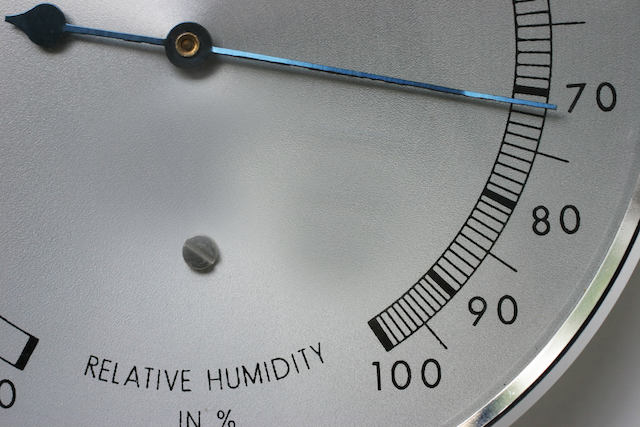
As you can see, mold in your beach rental or lake house property can happen fairly easily if certain steps are not taken to eliminate the conditions needed for growth. That can turn anyone’s vacation into a health hazard, and not just the high-tide variety.
The Health Aspect of Mold in Your Beach Rental or Lake House
The main issue with indoor contamination is the size of the particles involved. Mold spores, mycotoxins, and bacteria are so small that they’re measured in a unit called microns, which is 1/1000th of a millimeter (the tiny lines on a ruler). The EPA classifies these types of particles as particulate matter and groups them into two categories.⁶
These two categories are:
- PM10: particles that have a diameter of around 10 micrometers or less.
- PM2.5: fine particles that have a diameter of around 2.5 micrometers or less.
This tiny size allows them to be inhaled, ingested, and absorbed into the body.⁷ Some are so small that they can even zip straight into the bloodstream. And the kicker is that since they’re invisible to the naked eye, you’d never know that you’re being exposed to these particles.
The ability of these particles to get into the body is the root cause of the health issue regarding mold in your beach rental or lake house property. During an average day, you’re exposed to spores, bacteria, and mycotoxins while walking outside, driving in the car, or watching a movie at home. However, it’s a low amount of exposure because these particles have a big, wide world to disperse through.
An active colony in a home is not the same scenario, as a majority of the particles created by the mold and potentially bacteria remain trapped within the walls of the home. Instead of a few, your body is battling an entire army of microscopic contaminants. Your immune system will attempt to keep up and get rid of them, but it can become overloaded and/or malfunction, leading to adverse health effects.⁷’⁸’⁹’¹⁰’¹¹ For those who are particularly sensitive, such as anyone with a developing or compromised immune system, these reactions can occur faster and to a greater extent.
Nobody wants to be sick on vacation, which is why understanding how to avoid mold in your beach rental or lake house property is essential for a successful getaway.
Questions to Ask to Avoid Mold in Your Beach Rental or Lake House Property
Before booking a vacation, you’re going to want to contact the property owner to figure out what they’re doing to maintain a safe rental home that’s not full of mold. They should be well aware of indoor contamination, the importance of avoiding it, and be actively taking steps to keep their guests safe and healthy.
Questions you should ask include:
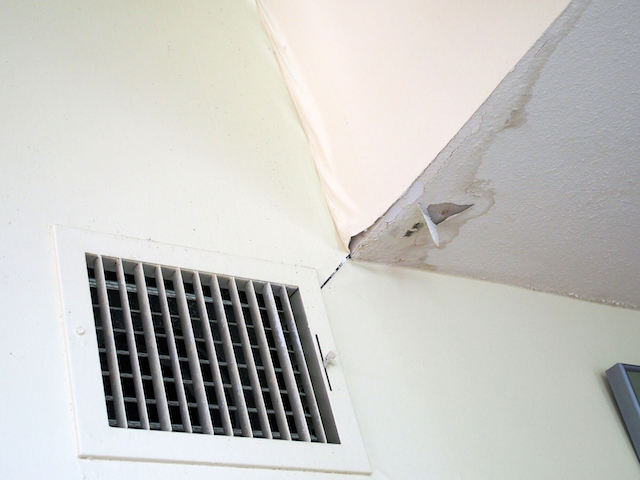
Has the property experienced any water damage recently, like flooding or a leak? If so, how was it handled?
Mold can grow in as little as 24-48 hours, so if this water damage goes unaddressed for some time, it leaves the door wide open for contaminants to move in. The area should also be tested for any contaminants, just to make sure that nothing managed to slip in. Also, was the source of the water damage resolved correctly? If not, it can lead to continued moisture and opportunities for growth.
Has there ever been mold growth in the rental home? If so, how was it resolved?
There’s a right way and a bunch of wrong ways to do remediation. Proper remediation should fix the source that led to the growth in the first place, remove the actively growing mold, and eliminate all contamination present from the issue. The rest of the home should also be decontaminated thoroughly to remove any particles released into the air. If all of these boxes aren’t checked, the mold colony could still be there, and/or the indoor space could be packed full of contaminates.
If a mold situation occurs, do they have a plan in place to remedy the issue?
This hits on a couple of key points. It will show you if they know how quickly the issue needs to be addressed, how to properly get rid of the contamination, and the repercussions of not handling the problem properly. Any property owner with their guests’ health in mind should have an action plan in place to tackle a moldy issue quickly and properly to help keep those spending time inside of the home safe.
What are they doing to prevent mold in your beach rental or lake house property?
There are a ton of steps a rental property owner could and should be taking to keep that indoor environment safe.
Things you should look for include:
- Monitoring indoor humidity and making sure it remains between 35-50%.¹² Creating airflow or installing a dehumidifier is a great start.
- Setting the home up for success if it’s left unused for portions of the year. This includes having someone come by frequently to check for any issues, turning off the water, and using leak detection devices.
- Using the highest-rated MERV filters that their HVAC system can handle. This ensures small particles like mold spores are actually filtered out of the environment.
- Keeping the air quality in top-notch shape by investing in air purification. This isn’t mandatory, but it’s a great way to help improve that indoor space.
- Cleaning and assessing the gutters often. This will help ensure blockages or broken systems don’t allow water to enter the home.
- Deep cleaning regularly using botanical products and HEPA vacuum cleaners. This will help remove as many particles as possible to reduce the toxic load inside.
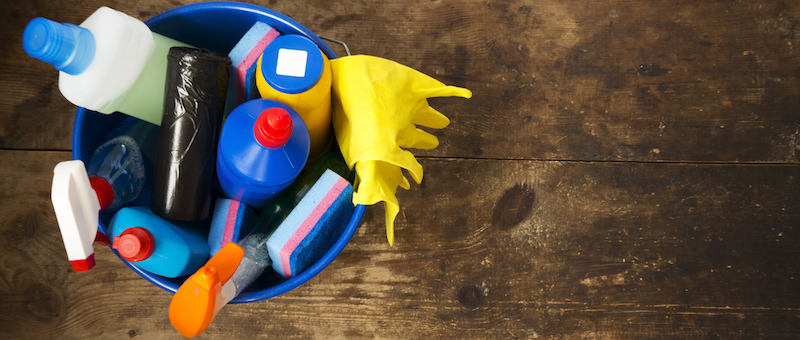
- Checking for mold throughout the home frequently. Sometimes, hidden leaks happen. They should assess the home often, taking a look around hotspot areas and using their nose for any musty smells.
- Scheduling an HVAC service technician to come in and service the system twice a year. This will make sure the machine is running properly and not contaminated with mold.
- Staying on top of deep-cleaning appliances and ensuring that they’re functioning properly. Faulty appliances can quickly lead to a moisture-filled situation and mold growth.
- Removing any carpet. Carpet can easily trap moisture, leading to a hot zone for contamination.
Is the structure of the home set up to prevent mold?
Many foundational issues can allow mold to grow in a home. Rental property owners should be aware of this and take steps to remedy any problems.
A few things to consider include:
- Are the windows installed properly to prevent moisture from getting inside?
- Does the attic have proper ventilation to allow for airflow?
- Is the basement set up with flood-control measures should an issue occur?
- Are the gutters installed properly to prevent water from leaching into the home?
- Does the foundation slope away from the building?
Do they inform guests of steps they need to take to prevent mold in your beach rental or lake house property?
People staying in these homes should be well aware of what they can do to help keep these indoor environments safe. A great route is for the property owner to provide them with a list of things they can do to help ensure the home remains a fun and healthy place for years to come.
This is also a great way to ensure you’re being a top-notch guest!
A few things on the list can include:
- Creating airflow in the bathroom and kitchen when in use
- Hang out all equipment and items used during water-filled days to dry.
- Immediately dry any wet clothing brought in from outside
- Remove wet clothes from the washing machine and place them in the dryer as soon as they’re done
- Wipe up any spills or pooled water ASAP
- Keep windows and doors closed when the AC is on
- Hang up towels, bathmats, and any other wet items to dry
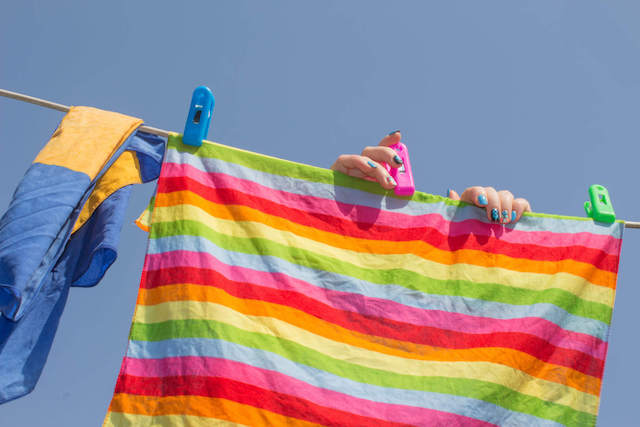
This isn't an exhaustive list, but it's a good starting point for ensuring that mold in your beach rental or lake house doesn't rain on your vacation parade.
Double-Checking to Make Sure Mold in Your Beach Rental or Lake House Property Isn’t a Problem
Asking the questions above is a fantastic step to ensure you and your family won’t be suffering from mold in your beach rental or lake house property. That being said, accidents happen and, unfortunately, everyone is not as truthful as they should be.
That’s why it’s important to also check the home before taking all of your belongings inside so they don’t potentially get covered in any contaminants. This will offer an added layer of protection for you and your family, plus peace of mind!
Here’s what you should do.
Take a Look Around
Use a flashlight and look at every little area you can get to in the home. You’re not only looking for mold during the hunt but also for water damage as well.
When it comes to visible mold, look for any discoloration or abnormalities. With so many species out there, mold can come in all sorts of colors, shapes, and textures, so look for any sort of abnormality. Some of the most common colors include green, white, grey, blue, red, black, brown, or the infamous pink. As for textures, they could be fuzzy, powdery, velvety, or slimy.
As for water damage, visible issues that indicate a moisture problem include coffee-like stains, discolored carpet, or bubbling and peeling paint/wallpaper. Condensation on windows can also point to a moisture and mold growth problem.
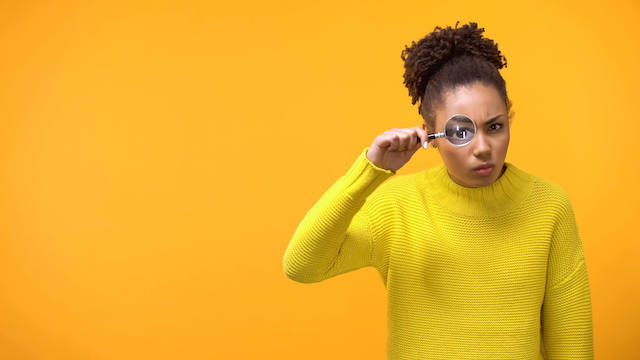
Some of the top areas to check for problems include:
- Basement
- Ceilings
- Caulk/grout
- Kitchen appliances
- Washing machine
- Attic
- Carpet
- Windowsills
- The toilet tank
Use Your Nose
If you don’t find any visible mold, that doesn’t mean that there isn’t a problem. The growth could be in a hidden location like beneath insulation, or it might be too small to be visible yet.
In this case, rely on your nose. Mold growth often creates a damp, musty, earthy smell due to the release of gases called microbial volatile organic compounds (MVOC).¹³ If you smell this in the space, there’s a good chance that you’re dealing with mold in your beach rental or lake house.
Pay Attention to Your Body
Just because you don’t see or smell a problem, doesn’t mean that there isn’t an issue. It’s also important to pay attention to your body and always trust your instincts. If you or a loved one randomly develops any symptoms while staying in the home, it could point to a contamination problem.
Our bodies are amazing warning systems that will let us know when something is wrong. If you start feeling unwell, those invisible particles could be wreaking havoc, causing your body to sound the alarm and push for you to get out of that situation. Always listen to your body when it’s saying, "Hey, something is definitely not right here."
Found Mold in Your Beach Rental or Lake House Property?
It could happen to anybody! The important thing is that you’re aware that there’s a problem so that you can begin taking action to resolve the situation.
If it’s a small issue, ask the property owner to come in or to hire someone to come in and properly remove the contamination ASAP. The sooner they come in, the less contamination there will be.
If you’re renting the space and find a large mold issue, alert the property owner ASAP and spend as little time as possible in that indoor environment. Belongings can be contaminated with particles, and you definitely do not want all of your vacation items to get covered in spores, bacteria, and mycotoxins. See if they can set you up in another location instead while they resolve the issue.
The unfortunate issue is that not all property owners will be understanding, so make sure to read the contract carefully to determine what they’ll be responsible for. If you have any questions, give them a call and see how they plan on handling a potential moldy issue while keeping you and your family during your vacation.
Enjoying Your Getaway Time
Again, this may seem extreme, but it’s worth the extra work. You never know how you or a loved one will react to mold in your beach rental or lake house, so it’s best to err on the side of caution and go the extra mile. Your body and everyone you’re staying with will absolutely thank you!
Plus, this will give you peace of mind and allow you to relax, recharge, and have fun. That’s what vacations are all about, after all!

Citations:
- Environmental Protection Agency. (n.d.). Mold. EPA. Retrieved from https://www.epa.gov/mold.
- Centers for Disease Control and Prevention. Basic facts about mold and dampness. Centers for Disease Control and Prevention. Retrieved from https://www.cdc.gov/mold/faqs.htm.
- Lstiburek, J., Brennan, T., & Yost, N. (2002, January 15). Rr-0208: What you need to know about mold. Building Science Corporation. Retrieved from, https://www.buildingscience.com/documents/reports/rr-0208-what-you-need-to-know-about-mold/view.
- World Health Organization. (n.d.). Mycotoxins. World Health Organization. Retrieved from https://www.who.int/news-room/fact-sheets/detail/mycotoxins.
- FDA. (2016, September 30). Food and Drug Administration COMPLIANCE PROGRAM GUIDANCE MANUAL. Food and Drug Administration. Retrieved from https://www.fda.gov/media/140749/download
- Taylor, S. (2019, March 2). What three conditions are ideal for bacteria to grow? Sciencing. Retrieved from https://sciencing.com/three-conditions-ideal-bacteria-grow-9122.html
- Nchh. (n.d.). Mold. NCHH. Retrieved from https://nchh.org/information-and-evidence/learn-about-healthy-housing/health-hazards-prevention-and-solutions/mold/
- EPA. (n.d.). Health and Environmental Effects of Particulate Matter (PM). EPA. Retrieved from https://www.epa.gov/pm-pollution/health-and-environmental-effects-particulate-matter-pm.
- Curtis, L., Lieberman, A., Stark, M., Rea, W., & Vetter, M. (2004). Adverse health effects of indoor molds. Journal of Nutritional & Environmental Medicine, 14(3), 261-274.
- Bush, R. K., Portnoy, J. M., Saxon, A., Terr, A. I., & Wood, R. A. (2006). The medical effects of mold exposure. Journal of Allergy and Clinical Immunology, 117(2), 326-333
- Fisk, W. J., Lei-Gomez, Q., & Mendell, M. J. (2007). Meta-analyses of the associations of respiratory health effects with dampness and mold in homes. Indoor air, 17(4), 284-296.
- Wild, C. P., & Gong, Y. Y. (2010). Mycotoxins and human disease: a largely ignored global health issue. Carcinogenesis, 31(1), 71-82.
- Environmental and Occupational Health Assessment Program, & Environmental and Occupational Health Assessment Program, & Health Science Section, Mold Basics for Primary Care Clinicians (2009). Hartford, CT; Connecticut Department of Public Health. , H. S. S., Mold Basics for Primary Care Clinicians 1–10 (2009). Hartford, CT; Connecticut Department of Public Health.
- Environmental Protection Agency. (n.d.). What does mold smell like? EPA. Retrieved from https://www.epa.gov/mold/what-does-mold-smell.
- EPA. (n.d.). A Brief Guide to Mold, Moisture, and Your Home. EPA. Retrieved from https://www.epa.gov/mold/brief-guide-mold-moisture-and-your-home#tab-6.

